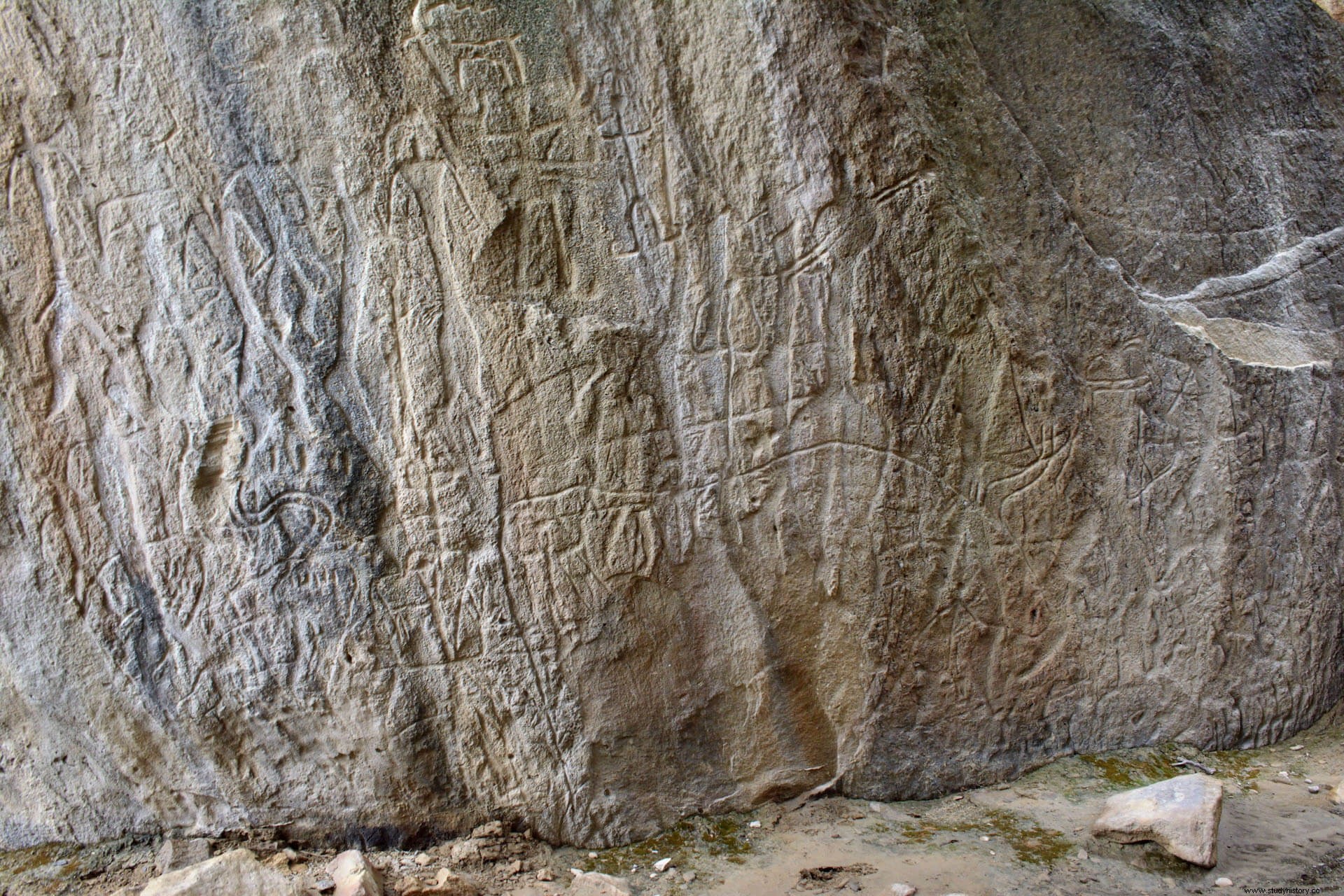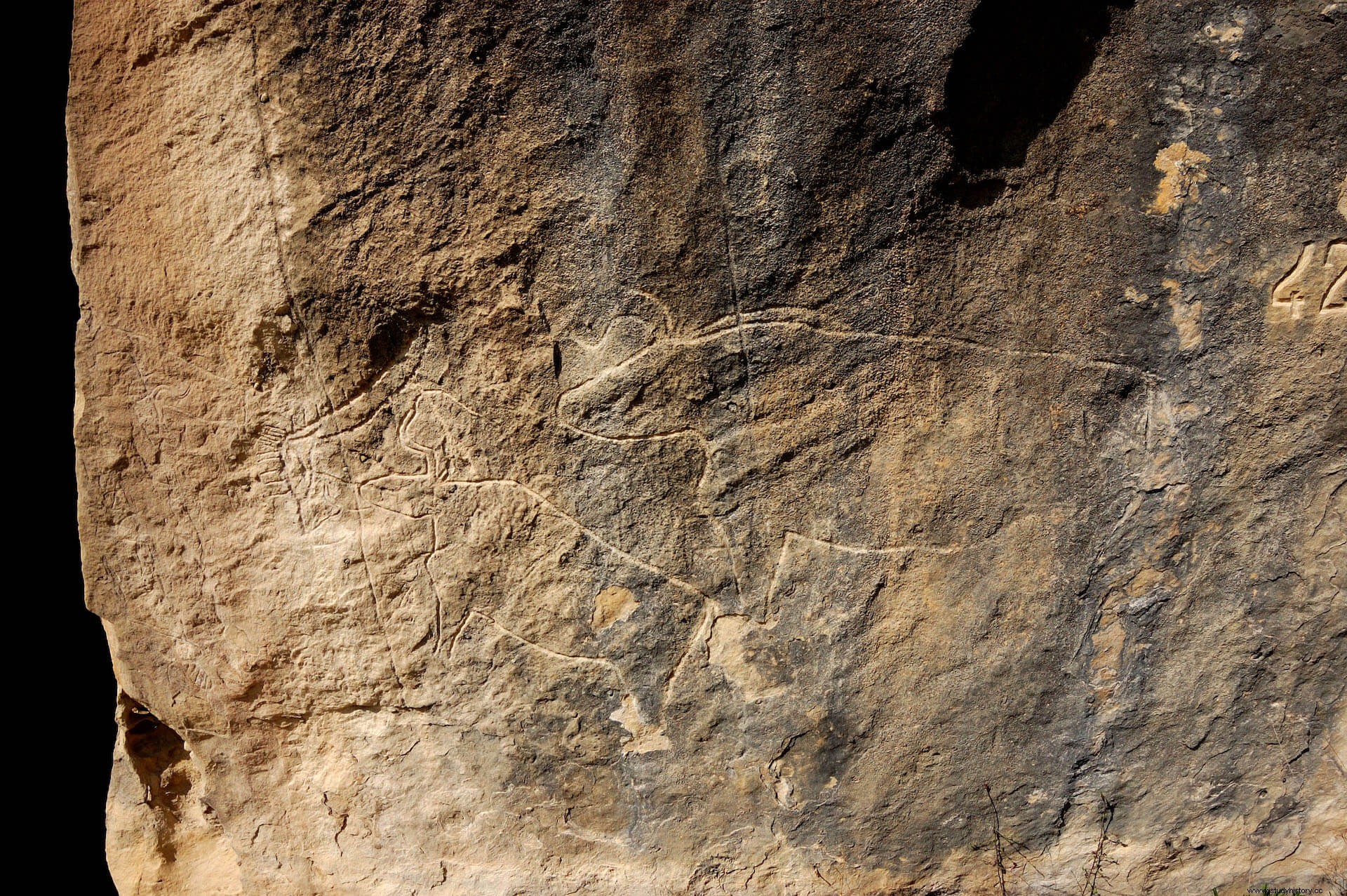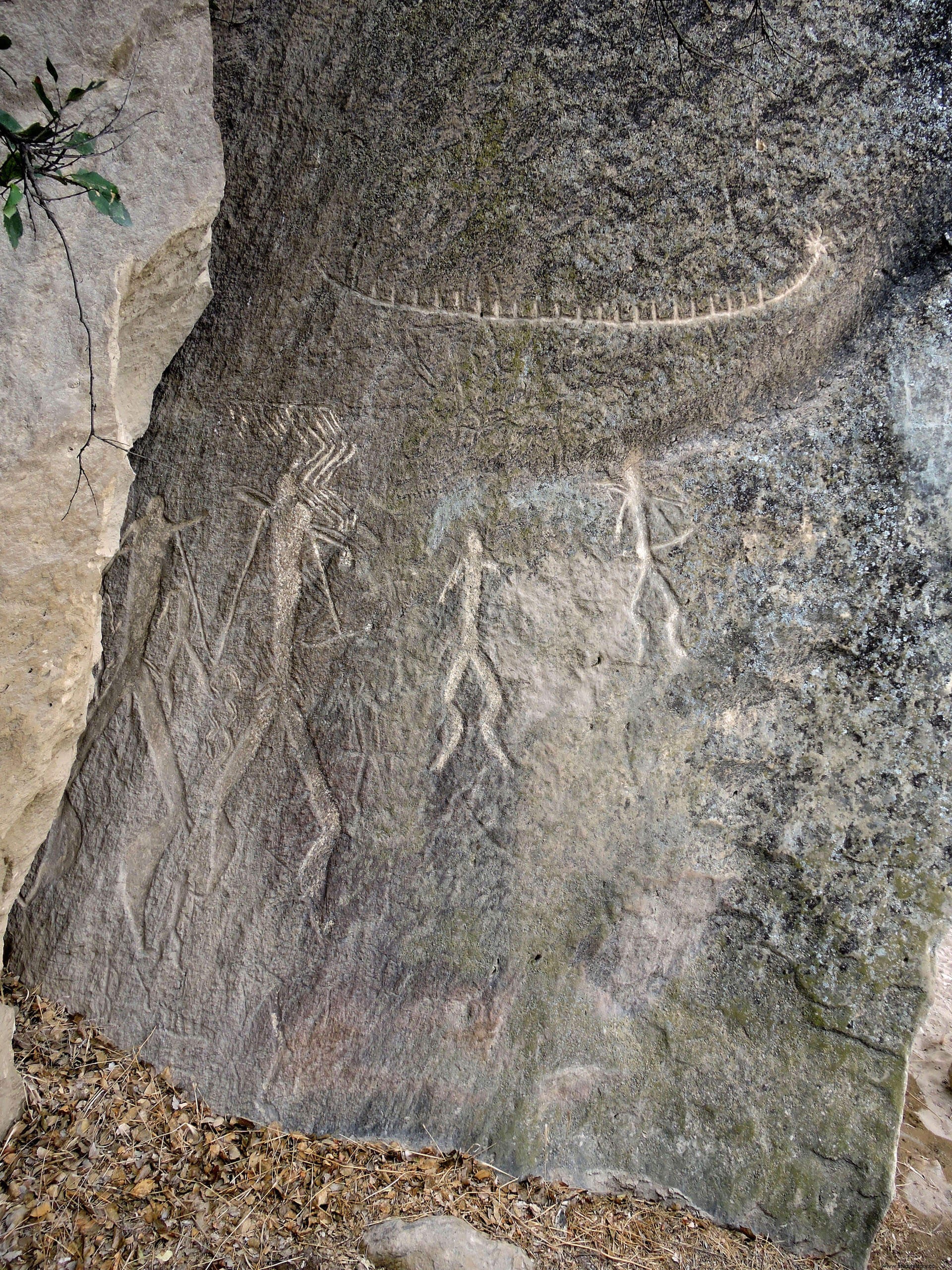
The current landscape is very different from what we knew long ago a few years, and this is due to the application of new dating and research methods, and to the discoveries that are being made outside the Iberian Peninsula and France. Today we know that the first cave images, that is, those found on immovable stone supports, are ascribed to Homo neanderthalensis and that they were made in Europe at least 65,000 years ago; We also know that the oldest images ascribed to Homo sapiens have been dated in Indonesia. Y; Gradually, cavities, shelters or places in the open air with engraved or painted images have been located in England, Croatia, Greece, Timor, China and Egypt. A whole scenario unimaginable until recently for the scientific community.
In this context of modification of our state of knowledge, the area of geographic contact between Europe and Asia constitutes a region with a high potential to advance in the knowledge of graphic symbolism. And the open-air rock art complex of Gobustan, in Azerbaijan , whose study has received support in the Palarq Foundation's call for foreign aid, is key.
Gobustan is situated in the extreme south-eastern part of the Greater Caucasus, on the western side of the Caspian Sea. It is linked to a rocky plateau that covers different areas in the semi-desert zone of central Azerbaijan. And it is one of the most significant places to visit with prehistoric rock art worldwide, an importance recognized by UNESCO in 2007.

The prehistoric rock art of Gobustan is a reflection of the first artistic works of humanity. The origin of art, symbolism and human abstraction are recognized in it. . It has a universal and exceptional value for the quality and density of its engravings, for the quantity (at least 6000 figures engraved on almost a thousand rocks) and the thematic, chronological (even reaching historical moments) and stylistic variety.
Many of the engraved rocks, usually with deep, wide grooves that make them easy to see, are true palimpsests, surfaces on which motifs have been carved for thousands of years, thus providing special symbolic significance to places. Sites that had to be transmitted orally generation after generation, expanding the decoration, reusing and modifying previous motifs, and possibly carrying out ritual actions where the space or the rock would have as much or more symbolic weight than the figures themselves. That is, it is possible that the place determined the location of the figures and their meaning.
The oldest phase of “Gobustan” art is mainly located in the areas of Böyükdaş, Kiçidaş and Şongardağ. It is made up, from what we know today, of animal figures (bovids, goats, and equids) in a realistic style, mostly with geometric bodies (poorly modulated contours) and frequently with little attention to the internal anatomy. They are graphically standardized figures that seek to convey the animal taxon and not so much a specific individual. They normally appear isolated or associated with each other but without composing scenes; In the best of cases, we could venture that the compositions are "photographs" of a real image that the Paleolithic groups visualized.

Remarkable is the presence of human figures male and female in Gobustan, some of almost natural dimensions. Sometimes several associates appear, forming sets that can be interpreted as possible dancers (sometimes spatially related to animals), which could be linked, with due reservations, to the field of rites. But it must be recognized that today there is discussion about their antiquity (are they more or less than 10,000 years old?, that is, are they Paleolithic?).
The ascription of signs and even other figurative forms, such as boats, to Paleolithic times is also problematic. It should not be surprising that verified information was found to support the hypothesis of navigation in ancient dates, even more so in a place like Gobustan, just 4.5 km from the current coastline of the Caspian Sea and that at certain times was even more near places with art.
If the quantity and variety of Palaeolithic art in Gobustan is exceptional, it is equally or more important that the artistic manifestations, located in shelters or in the open air, are associated in some cases (as in Ana-Zaga and Gaya-Arasi) with archaeological remains of daily activity , occupying both realities in the same space.
This is important for two reasons. In the first place, because in some cases the sediments cover the walls with engravings (and there are even cases of wall fragments that have detached and been incorporated into the archaeological levels), which allows dating its execution; this is something exceptional, there are very few similar situations in the world. And secondly, because it allows us to approach the meaning of art based on knowing the existing archaeological remains and the functional complementarity of the spaces; Is it infrequent that the daily space linked to rest, food, socialization, etc. shared with the space related to rituality? If we look at how a part of our society works, it is not difficult to accept that the ritual does not necessarily have to be linked to a singular and specific space, since spaces can be multifunctional.

In short, the oldest rock engravings in Gobustan are an exceptional testimony of a way of life that has disappeared, because they graphically represent human activities and cognitive and symbolic complexity, closely linked to the construction of the first graphic language and formal communication, as well as thoughts and ideas. of human groups.
Gobustan is a unique place to answer questions that are currently open. When did prehistoric rock art emerge in Western Asia? How did the stylistic, thematic and technical development of Paleolithic rock art take place? What is the relationship between symbolic space and everyday space? What cultural, social or symbolic reason explains the huge accumulation of rock art in Gobustan?
And finally, the Paleolithic tradition of this sector shows graphic links with other areas located more than 4,000 km away. Consequently, the study of the art of Gobustan, at the gates of Europe, constitutes a key element to understand the mobility of human groups and the origins and mechanisms of interculturality and human globalization.
